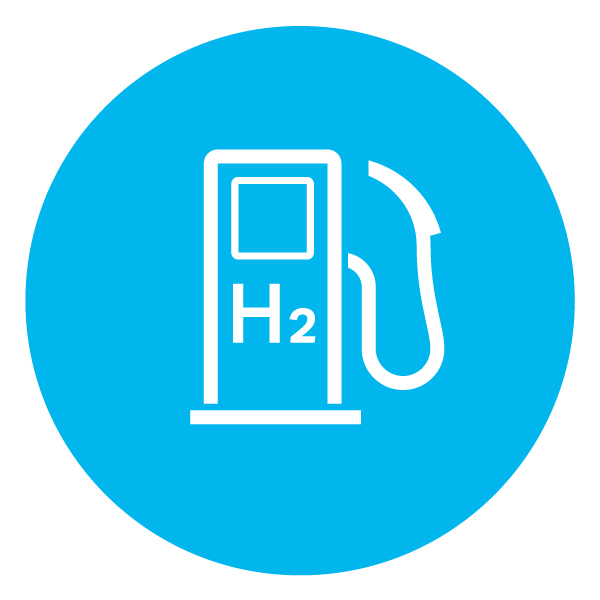Complex preparation of a simple molecule – the hydrogen infrastructure
In order to achieve the goal of climate neutrality in 2050, greater use of renewable energies is necessary. Hydrogen as a versatile
energy carrier and storage medium can form the basis for the necessary sector coupling. For this to succeed, the entire H₂ infrastructure must be considered and potentials leveraged.


Electrolysis for sustainable mobility
Electrolyzers that generate the energy-rich gas from electricity and water are available in many performance classes: Central plants with electrical input powers in the 100-megawatt range supply industry, feed into the gas grid and form the basis for the production of so-called e-fuels. In contrast, there are locally available electrolyzers in the power range of less than 1 MW. IAV has worked with partners to demonstrate such a decentralized and compact plant and has further developed the central components such as the pressurized electrolysis module and the system control. Ralf Wascheck explains the technical concept: “Thanks to the modular design, the performance class can be increased cost-effectively, which is why this electrolysis concept is ideally suited for supplying filling stations in the future – for example, for public spaces or for logistics companies’ own operations as well as for local public transport.”
«The concept combines the dynamics of PEM electrolysis with the robustness of alkaline technology.»
— Head of Department for Fuel Cell and Hydrogen Mobility at IAV

Efficient logistics chain
Depending on the existing infrastructure and the quantities to be transported, hydrogen is mainly transported either in gas pipelines or – again in gaseous or liquid form at -253°C – by tanker truck. The legal requirements for the conversion of existing natural gas pipelines have not yet been clarified; liquefaction, on the other hand, requires an immense amount of energy.
There are no patent solutions for the choice of storage technology and the design of the logistics chain. IAV uses its own optimization tools to enable H₂ consumers to reduce costs nevertheless. Taking acquisition costs and other factors into account, suitable technologies can be selected, necessary subsystems dimensioned and delivery intervals determined, for example.
The installation of electrolyzers and hydrogen filling stations requires extensive knowledge of a legal situation that is undergoing considerable change. In addition to designing the systems and developing efficient operating strategies, IAV therefore provides project planning support – both when converting existing systems and when installing new ones, taking into account applicable standards and directive.

Optimizing the consumption side
At the end of the value chain are possible consumption sectors such as transport, buildings, industry as well as power generation. IAV offers a wide range of services here, especially in the field of transportation with concepts for hydrogen combustion engines, for example, as well as fuel cells for a variety of applications.
Suitable filling stations are needed for the various applications of hydrogen in mobility. IAV provides support here in mechanical, electrical and thermal integration and has detailed thermodynamic simulation models of all relevant components. In addition to the automotive and aviation sectors, activities are being extended to the maritime and rail sectors.
In addition, IAV is looking at stationary consumers, for example the building sector. In future quarters, energy in the form of electricity, natural gas, heat and hydrogen can be purchased at prices that fluctuate over time. Specified load profiles for electricity and heat, for example, can be implemented in a cost-optimizing manner. Depending on the scenario, hydrogen can be converted back into electricity with fuel cells, burned in combined heat and power plants or thermal baths, fed into the gas grid or used to supply a connected filling station. Efficiency losses from the electrolyzer and fuel cell can be stored in the form of heat and used specifically for heating.
However, conventional control strategies do not do justice to the more complex infrastructure. IAV is therefore developing open- and closed-loop control systems that optimize the mode of operation, taking into account forecast electricity prices and load profiles. “While the algorithms remain largely unchanged, the respective adjustment is made via defined model parameters such as the output of the electrolyzer or the size of the hydrogen storage tank. Scalability is ensured by transferring the one-time high development effort to numerous systems,” explains Michael Nöding, development engineer in the Hydrogen Infrastructure and Electrolysis team at IAV.
The article was published in automotion 02/2020, the automotive engineering magazine of IAV. Here you can order the automotion free of charge.
- Hydrogen & Fuel Cell


